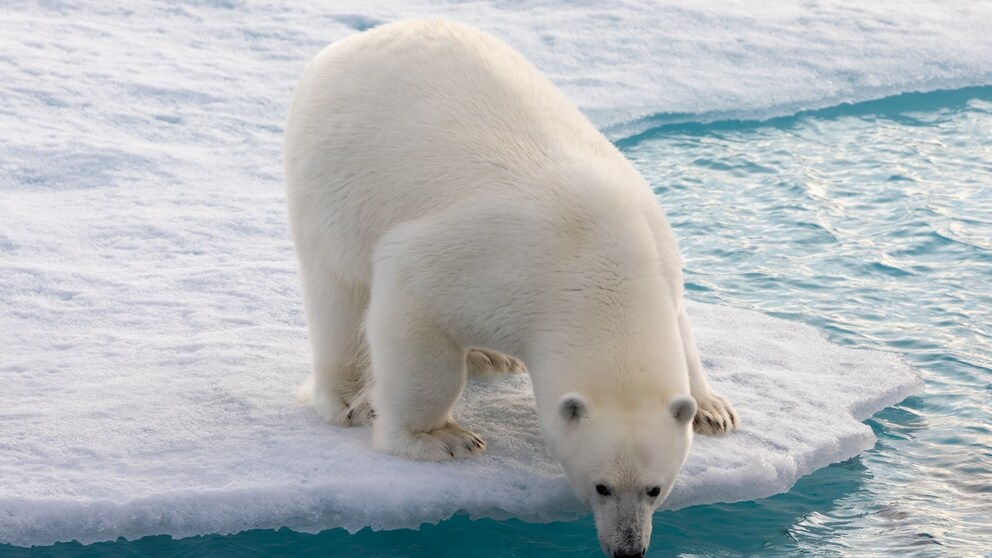February 2, 2025, 9:18 am | Read time: 3 minutes
Polar bears have adapted perfectly to their Arctic home. This includes not only the thick layer of blubber and the warm fur – it also has to be unwashed and greasy, as a study shows.
While we humans wash our hair at regular intervals and nervously check whether our roots look greasy, polar bears seem to give it little thought. However, this has nothing to do with a lack of hygiene in the animals, as an international group of researchers discovered. This is because the polar bear’s greasy fur has decisive, vital advantages for the Arctic dwellers.
Greasy Layer on the Fur Prevents Ice from Sticking
Shampoo, conditioner, treatment, and serum – humans already do a lot to keep their hair healthy and, above all, clean. Polar bears, on the other hand, would probably rather do without all hair-washing products and instead wish for really greasy, unwashed fur. At least, that is the conclusion reached by an international group of scientists in a study published in the journal Science Advances.
This is because polar bears have an insulating layer of fat and fur all over their bodies. This means that very little of their body heat escapes to the outside. However, this would mean that ice crystals would have to form in the fur when the animals go swimming, and the water would then freeze in the icy air. However, this is not the case. Large accumulations of ice would restrict the animals’ movements and make hunting more difficult. For example, when frozen, heavy fur scratches on the ice.
Why this is not the case has long been a mystery. This is because, unlike the feathers of penguins, which allow water to roll off before it freezes, it gets stuck in the dense fur of polar bears. For this reason, the researchers initially theorized that the structure of the hair must be different. However, an analysis of six samples of polar bear fur under the microscope revealed that it is not structured any differently from human hair and, therefore, could not explain the ice-repellent properties.

How often you should clean your pets’ water and food bowls

Turtle sets a new diving record

These Household Chemicals Promote Cancer in Dogs
Greasy Polar Bear Fur Keeps Ice off as Well as Ski Equipment
So, the researchers next looked at the lipids present in unwashed polar bear fur. The analyses showed an unusual mixture of cholesterol, diacylglycerols, and branched fatty acids. However, there was no squalene, which is found in most other aquatic mammals and humans.
“Tallow quickly emerged as a key component of this anti-ice effect,” said first author Julian Carolan in a press release from Trinity College Dublin. This is because the researchers also found “that the holding power was severely impaired when the hair was washed. Unwashed, greasy hair made it much harder for the ice to adhere.” It had an ice adhesion force of only around 50 kPa – far below the threshold of 100 kPa, which is generally considered to be ice-repellent.
In the next step, the researchers wanted to find out what would happen if the fur was clean. This revealed a drastically increased ice adhesion (over 150 kPa). Dr. Richard Hobbs, senior author of the study, believes that the data obtained not only provides exciting insights into bears but also offers further potential applications. “Animals that live in polar habitats have proven to be a source of inspiration for the development of new anti-ice materials.”
At the moment, so-called “perpetual chemicals” are used for anti-ice coatings. These perfluorocarbons and polyfluorocarbons (PFAS) are found in many materials that are supposed to be dirt-, grease-, and water-repellent. However, the chemicals are not biodegradable and are suspected of accumulating in the human body – with serious health consequences. The researchers, therefore, hope that the properties of the natural lipid coatings in polar bear fur will help them to develop sustainable alternatives. 1

